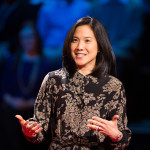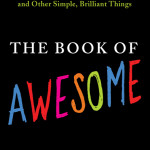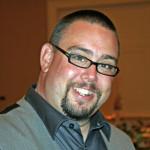“Intelligence is what you use when you don’t know what to do.”
This book is for anyone who has ever wondered how a child develops language, thought, and knowledge. Before this classic appeared, little was known of the way children think. In 1923, however, Jean Piaget, the most important developmental psychologist of the twentieth century, took the psychological world by storm with The Language and Thought of the Child. Applying for the first time the insights of social psychology and psychoanalysis to the observation of children, he uncovered the ways in which a child actively constructs his or her understanding of the world through language. The book has since been a source of inspiration and guidance to generations of parents and teachers. While its conclusions remain contentious to this very day, few can deny the huge debt we owe to this pioneering work in our continuing attempts to understand the minds of the child. [From: Amazon.com]
“The principle goal of education in the schools should be creating men and women who are capable of doing new things, not simply repeating what other generations have done; men and women who are creative, inventive and discoverers, who can be critical and verify, and not accept, everything they are offered.”
In the same way that Alfred Kinsey spent years collecting specimens of and writing about the gall wasp before he launched himself on the study of human sexuality, Jean Piaget was a master of natural-world observation before he turned his mind to human matters. As a child and teenager the wandered the hills, streams and mountains of western Switzerland collecting snails, and later wrote his Doctor’s thesis on the mollusks of the Valais mountains.
What he learned in these years – to observe first and classify later – set him up well for examining the subject of child thought, which had attracted plenty of theories but not a great deal of solid scientific observation of actual children. Entering the field, his main wish was that his conclusions be drawn from the facts, however difficult or paradoxical they seemed. Adding to his methodical skills was – for a scientist – an unusually good grasp of philosophy. Child psychology was a tangle epistemological questions, yet he decided to focus on very down to earth issues such as ‘Why does a child talk, and who is she talking to?’ and ‘Why does she ask so many questions?’.
If there were answers, he knew they could benefit teachers greatly, and it was for them mainly that he wrote The Language and Thought of the Child. As Edouard Claparede notes in his preface, most explorers of the child mind had focused on a quantitative nature of child psychology – it was thought that children are how they are because they have less of the mental abilities of the adult and commit more errors. But Piaget believed that it was not a matter of children having less or more of something – they are fundamentally different in the way they think. Communication problems exist between adults and children not because of gaps in information, but due to the quite different ways each have of seeing themselves within their worlds.
Why a child talks
In the opening pages, Piaget asks what he admits is a strange question: “What are the needs which a child tends to satisfy when he talks?” Any sane person would say that the purpose of language is to communicate with others, but if this was the case, he wondered, why did children talk when there was no one around, and why did even adults talk to themselves, whether internally or muttering aloud? It was clear that language could not be reduced to the one function of simply communicating thought.
Piaget conducted his research at the Rousseau Institute in Geneva, opened in 1912 for the study of the child and teacher training. There he observed children of four and six, taking down everything they said while they worked and played, and the book includes transcripts of their ‘conversations’.
What Piaget quickly discovered – and what every parent could confirm – is that when children speak, a lot of the time they are not talking to anyone in particular. They are thinking aloud. He identified two types of speech, egocentric and socialized. Within the egocentric type were three patterns:
- Repetition – speech not directed to people, the saying of words for the simple pleasure of it.
- Monologue – whole commentaries which follow the child’s actions or play.
- Collective monologue – when children are talking apparently together, yet are not really taking account of what the others are saying. (A room of ten children seated at different tables may be noisy with talk, but in fact are all really talking to themselves.)
“What we see changes what we know. What we know changes what we see.”
He noted that until a certain age (seven, he thought), a child has no ‘verbal continence’, but must say anything that comes into his head. A kindergarten or nursery, he wrote, “is a society in which, strictly speaking, individual and social life are not differentiated”. Because the child believes themselves to be the center of the universe, there is no need for the idea of privacy or witholding views in sensitivity to others. The adult, in contrast, because of his comparative lack of egocentricity, has adapted to a fully socialized speech pattern in which many things are left unsaid. Only madmen and children, as it were, say whatever they think, because only they really matter. It was for this reason that a child is able to talk all the time in the presence of his friends, but never be able to see things from their point of view.
Part of the reason for the egocentricity of the child is that a significant part of their language involves gesture, movements and sounds. As these are not words, they cannot express everything, so the child must remain partly a prisoner of their own minds. We can understand this when we appreciate that the greater an adult’s mastery of language, the more likely he or she will be able to understand, or at least be aware of, the views of others. Language, in fact, takes a person beyond themselves, which is why human culture puts such stress on teaching it to children – it enables them to eventually move out of egocentric thinking.
[ READ The Language and Thought of the Child (Part 2) – Jean Piaget HERE
“Different thinking, different worlds – Child Logic” ]
About the Author:
Jean Piaget (1896–1980) was a Swiss Psychologist, Biologist and Scientist well known for his work studying children.
Over the course of his six-decade career in child psychology, Piaget identified four stages of mental development, called Schema. The first is the “sensorimotor stage,” which involves learning through motor actions, and takes place when children are 0–2 years old. During the “preoperation stage,” children aged 3–7 develop intelligence by using their natural intuition. During the “concrete operational stage,” children 8–11 develop cognitively through the use of logic that is based on concrete evidence. “Formal operations,” the fourth and final stage, involves 12-to-15-year-olds forming the ability to think abstractly. Piaget called his collective theories on child development “Piaget’s Genetic Epistemology.”
In 1955, he created the International Centre for Genetic Epistemology in Geneva and directed it until 1980. According to Ernst von Glasersfeld, Jean Piaget is “the great pioneer of the constructivist theory of knowing.”
He also developed new fields of scientific study, including cognitive theory and developmental psychology. Piaget received the Erasmus Prize in 1972 and the Balzan Prize in 1978.
[From: Biography.com and Goodreads.com]
If you like this story, CLICK HERE to join the tribe of success-minded people just like you. You will love our weekly quick summaries of top stories, talks, books, movies, music and more with handy downloadable guides, cheat sheets, cliffs notes and quote books.
And, you can opt-out at any time – no strings, promise… CLICK HERE


















